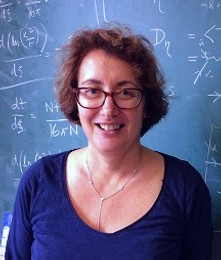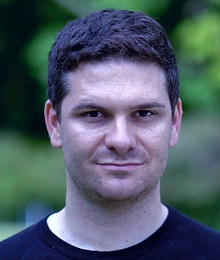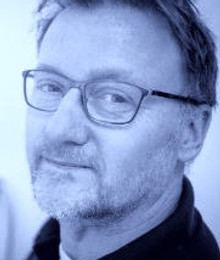
Strange metals
Focus session with DIEP support | 26th January 2022| 14:35 - 16:15 | online | Physics@Veldhoven 2022
Catherine Pepin
Millan Allan
Steef Smit
Chair: Jan Zaanen
Nigel Hussey
Summary
The cuprates have been of interest to both the experimental and theoretical physics community for the past three decades due to their peculiar metallic properties that cannot be explained within the standard Fermi-liquid framework. In this class of materials, that have in common a layered structure of CuO2 planes, strong Coulomb interactions between the electrons give rise to unusual and still unclear quantum behavior, of which the high-temperature superconducting phase is of most technological importance. Above the maximum critical temperature of the superconducting phase, we find the so-called strange metal, whose anomalous linear-in-T resistivity characterizes its non-Fermi liquid behavior, even if the superconductivity is suppressed by a magnetic field. Given the importance of understanding the physics at play in the strange-metal phase in order to also get a better grasp on the instability towards high-temperature superconductivity, there have been a variety of attempts to model the strongly interacting cuprates. One technique in particular is the application of the AdS/CFT correspondence, or holographic duality, conjectured and first developed by the string-theory community, but that has proven to be a powerful tool to qualitatively study low-energy properties of strongly interacting quantum matter as well. In this focus session we want to give an overview of field and of the latest developments and insights.
Programme:
Charge orders and charge fluctuations have been ubiquitously observed in the phase diagram of Cuprate superconductors. We will review the experimental status of these various observations, differentiating the under-doped region and the optimally-doped and over-doped ones. Various theories have been advanced to explain the presence of these orders and their implication for our understanding of the pseudo-gap, from the idea of “vestigial order” to the one of “fluctuating Pair Density Wave (PDW)”. We will discuss these theoretical approaches in direct comparison with experiments. We will then introduce a proposal of “fractionalization of a PDW” in order to explain the pseudo-gap state. We will show that this idea produces a strong phenomenology, especially ARPES experiments, and giving a clue for the puzzling transport properties recently reported in the optimally doped and over-doped regions. We will then focus on the strange metal phase of those compounds and make a proposal for electric transport in this phase.
Charge order and strange metals in cuprate superconductors
Catherine Pepin, Insitut de Physique Théorique | 14:35-15:00


Non-mean-field breakdown of heterogenous superconductivity in overdoped cuprates
Millan Allan, Leiden U. | 15:00-15:25
Despite the many mysterious features of cuprate high-temperature superconductors, a consensus emerged that the superconductivity itself is, at sufficiently high hole-doping, governed by the mean-field Bardeen-Cooper-Schrieffer (BCS) mechanism, where Cooper pairs become observable though the opening of a gap in the quasiparticle density of states. When the superconducting transition temperature (Tc) is strongly reduced at high doping concentrations, conventional theory predicts that the number of paired electrons (superfluid density) at low temperatures should be of the order of the total numbers of valence electrons, but measurements show that the superfluid density goes to zero when Tc goes to zero. I will present scanning tunneling spectroscopy measurements in the overdoped regime of the (Pb,Bi)2Sr2CuO6+δ high-temperature superconductor show that the vanishing superfluid density is due to the emergence of a heterogeneous state with nanoscale superconducting puddles in a metallic matrix, in line with theoretical proposals within the Bardeen-Cooper-Schrieffer (BCS) mean-field theory. Our measurements further reveal that this puddling is driven by gap filling, not gap closing. Unexpectedly, we find that a basic rule from the mean-field description is dramatically violated: mean-field theory predicts that pair-breaking should always go hand in hand with a reduction of the gap magnitude, but we observe instead that a larger gap coincides with stronger pair breaking.
ARPES is unique in providing k-space sensitive access to the ω- and T-dependence of the self-energy for interacting electron systems. Recently published laser-ARPES data from the cuprate BSCCO-2212 proposed that its normal state self-energy exhibits power-laws[1], which tie in with ideas of quantum critical behavior across a wide range of doping – a fingerprint of a strange metal phase. Theoretical understanding of this phase is limited, despite decades of research. Recently, the holographic AdS/CFT approach[2] has been proposed to hold the answer, something we set out to test. Here, we present new ARPES data from the normal state of the single-layer cuprate BSCO-2201. The data demand that the self-energy used to analyze them is k-dependent. This provides compelling arguments for the relevance of AdS-CFT models as they prescribe that these power law scaling exponents depend on k. This data therefore allows for quantitative comparison of ARPES with AdS-CFT-based theories. We find that the semi-holographic response function from the Gubser-Rocha model[3] captures the essentials in the ARPES data. Consequently, this combination of experiment and theory provides compelling arguments that not only strange metals represent a quantum critical phase, but their real-life properties can be described using holographic emergence principles. [1] T. J. Reber, et al, Nature Communications10, 5737,2019 [2] J. Zaanen et al,2015 [3] S. S. Gubser and F. D. Rocha, Physical Review D 81,2010
Momentum-dependent scaling exponents in strange metals: ARPES meets holography
Steef Smit, U. Amsterdam | 15:25-15:50


Building a bridge across the strange metal divide
Nigel Hussey, Radboud University | 15:50-16:15
The strange metal phase of copper oxide high-temperature superconductors is a conundrum. On the one hand, it is blessed with simplicity - as in the single power-laws expressed in the dc and optical conductivities; one the other hand, it is riddled with complexity - as characterized by a host of disconnects between various probes, between properties at low and high magnetic fields, even in its real- and momentum-space representations. In this talk, we will summarize the work carried out by the Strange Metal consortium over the past five years and our attempts to build bridges across these various divides with the aim of identifying a way forward towards a unified description of these remarkable materials.
